 “Imbued with a message from the past, the historic monuments of generations of people remain to the present day as living witnesses of their age-old traditions. The common responsibility to safeguard them for future generations is recognized. It is our duty to hand them on in the full richness of their authenticity.” — Venice Charter,1964
“Imbued with a message from the past, the historic monuments of generations of people remain to the present day as living witnesses of their age-old traditions. The common responsibility to safeguard them for future generations is recognized. It is our duty to hand them on in the full richness of their authenticity.” — Venice Charter,1964
Heritage Trail
Explore architectural heritage with fun
- Individual project
- Date: May 2018 - Oct 2018
- UX research and design, UI design
 Dora, a college student majoring in math, often finds herself swamped with assignments. Occasionally, she’s intrigued by architectural heritage, but the complexity of professional materials daunts her. Moreover, despite using her valuable holidays to visit these sites, she often leaves with little understanding of the heritage she saw… until she met Heritage Trail!
Dora, a college student majoring in math, often finds herself swamped with assignments. Occasionally, she’s intrigued by architectural heritage, but the complexity of professional materials daunts her. Moreover, despite using her valuable holidays to visit these sites, she often leaves with little understanding of the heritage she saw… until she met Heritage Trail!
 With this tool, Dora begins exploring global heritage sites online during her free hours. One day, the Vicenza Basilica, previously unknown to her, caught her eye. Within 15 minutes, she gained foundational knowledge about it and, guided by Heritage Trail, delved deeper into its history. She excitedly shared her newfound knowledge with friends, sparking curiosity in many of them.
With this tool, Dora begins exploring global heritage sites online during her free hours. One day, the Vicenza Basilica, previously unknown to her, caught her eye. Within 15 minutes, she gained foundational knowledge about it and, guided by Heritage Trail, delved deeper into its history. She excitedly shared her newfound knowledge with friends, sparking curiosity in many of them.
 Her appreciation for architectural heritage grew, understanding its profound value. On her next vacation, she visited the Vicenza Basilica. Armed with knowledge, she enjoyed her trip, ensuring she saw every significant site. Dora’s journey culminated in capturing a special photograph in front of the famous Palladian Motive on the Vicenza Basilica’s facade.
Her appreciation for architectural heritage grew, understanding its profound value. On her next vacation, she visited the Vicenza Basilica. Armed with knowledge, she enjoyed her trip, ensuring she saw every significant site. Dora’s journey culminated in capturing a special photograph in front of the famous Palladian Motive on the Vicenza Basilica’s facade.
So, how we got there? Let’s talk about the design process!
Define Opportunity Space
How can we enhance public understanding of architectural heritage and its significance?
Despite its importance, heritage conservation faces numerous challenges. Some iconic sites suffer from over-tourism, while others remain forgotten. In regions plagued by war, poverty, or oppressive governance, safeguarding heritage sites becomes even more challenging.


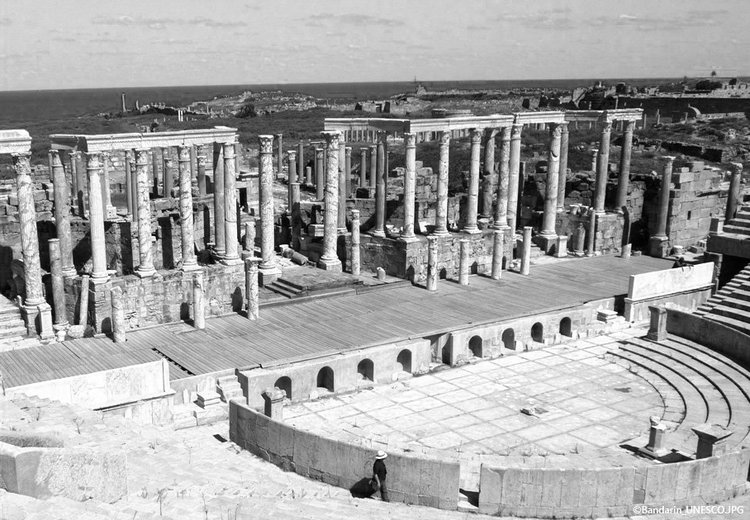
Public awareness plays a pivotal role in cultural heritage conservation. The Heritage Cycle diagram demonstrates how public engagement is central to heritage preservation: understanding heritage value is foundational.
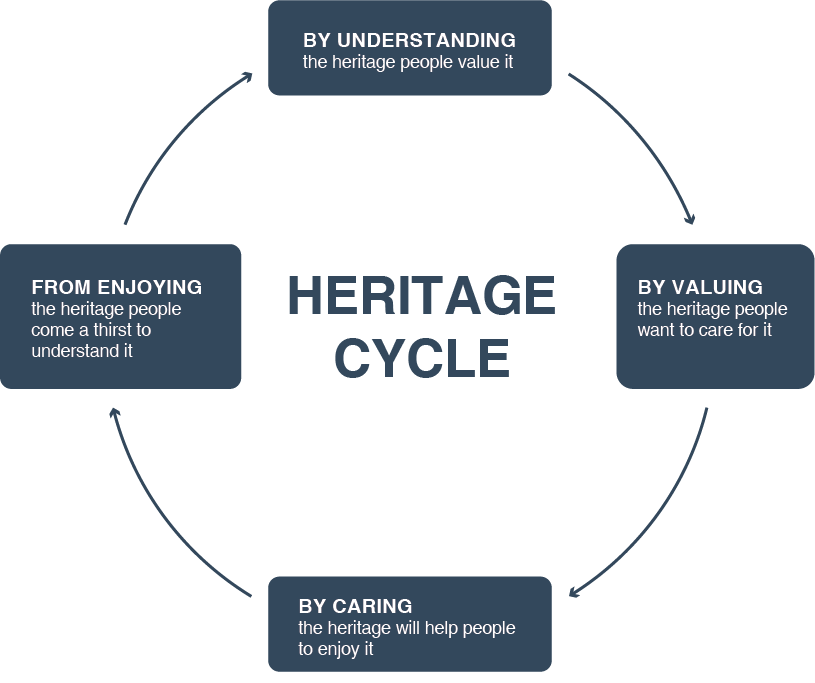
For the general public, truly grasping architectural heritage can be challenging. Besides direct visits, traditional media like photos and videos were the primary means of showcasing these immovable heritages. This passive approach often seemed unengaging and monotonous.
As a Conservation of Historic Architecture student, I’m eager to leverage UX design to champion heritage protection. Inspired by HCI, I began exploring how emerging technologies can pave new avenues in this domain.
Re-frame the Problem
Understanding architectural heritage and its significance is vast in scope. To address this, I started by pinpointing our target audience and identifying their pain points. I conversed with nearly 30 individuals — archaeological conservators, tourists, tour guides at Shanghai’s heritage sites, and peers. Post brainstorming based on age, profession, behavior, and goals, I focused on young individuals not specializing in architecture. This demographic offers a rich opportunity for promoting intergenerational heritage preservation, guiding our research.
Customer Journey
To understand how youngsters approach heritage, I interviewed seven young individuals, mapping out their journey.
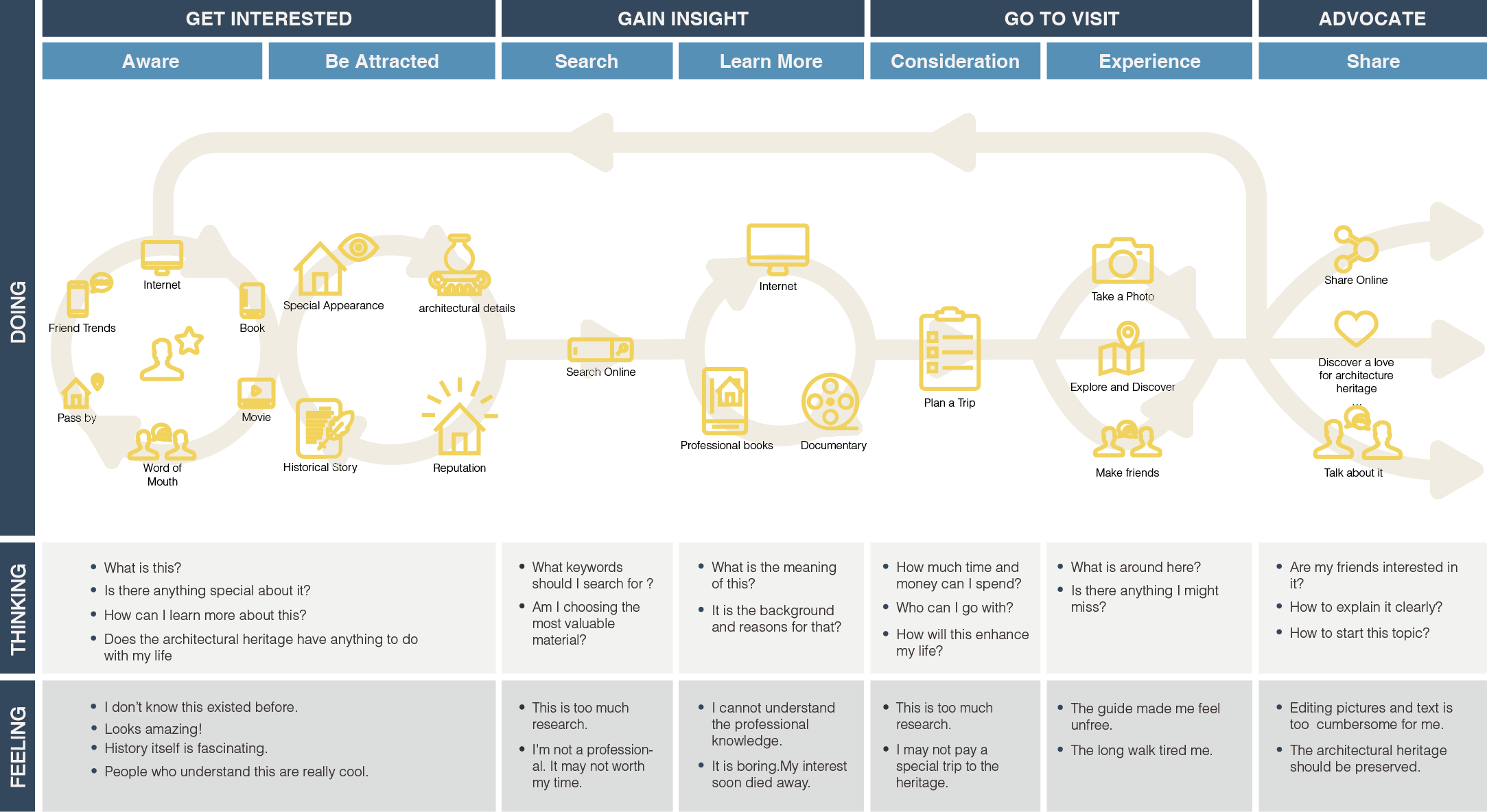
Key Insights
Our primary research yielded these insights:
- People’s attraction to architectural heritage varies.
- Gaining knowledge offers a sense of achievement, but time investment remains a concern.
- Unexpected discoveries are captivating.
- While people wish to share their learnings, they often struggle with initiating conversations on the subject.

Design Principles
Drawing from these insights, we outlined our design principles.
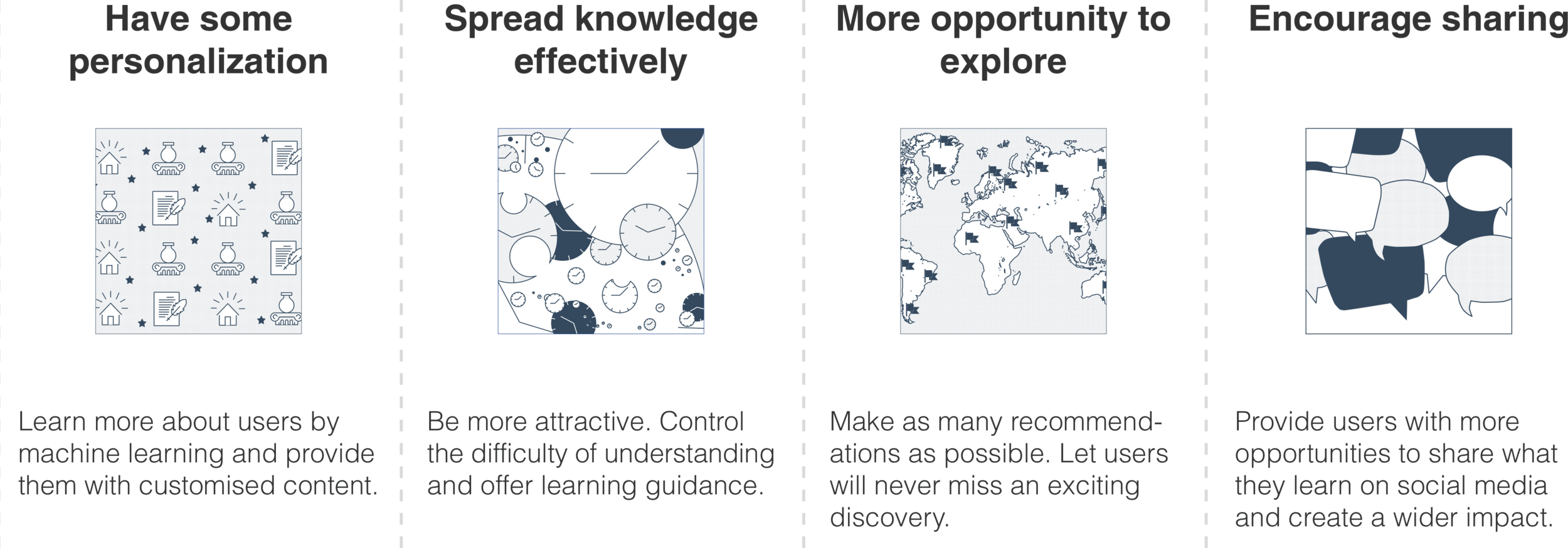
How can we curate a personalized, engaging architectural heritage learning experience focused on discovery and sharing?
Wireframe
Guided by previous research, I proposed an APP incorporating these core modules:
- Customised Recommendation
- World Exploration
- Heritage Introduction
- Personal Record

Hifi Design
Customised Recommendation
-
A brief survey helps the system gauge users’ interests and background knowledge. With this information, the system suggests relevant heritage sites. Additionally, preferences of similarly-profiled users can guide recommendations.
-
The home page showcases what users prioritize: visuals, location, exploration duration, and popularity.
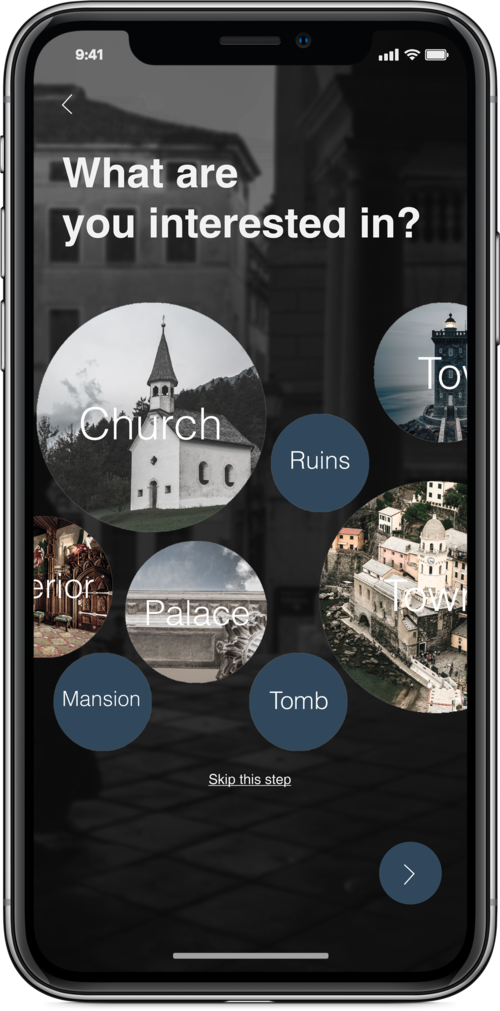
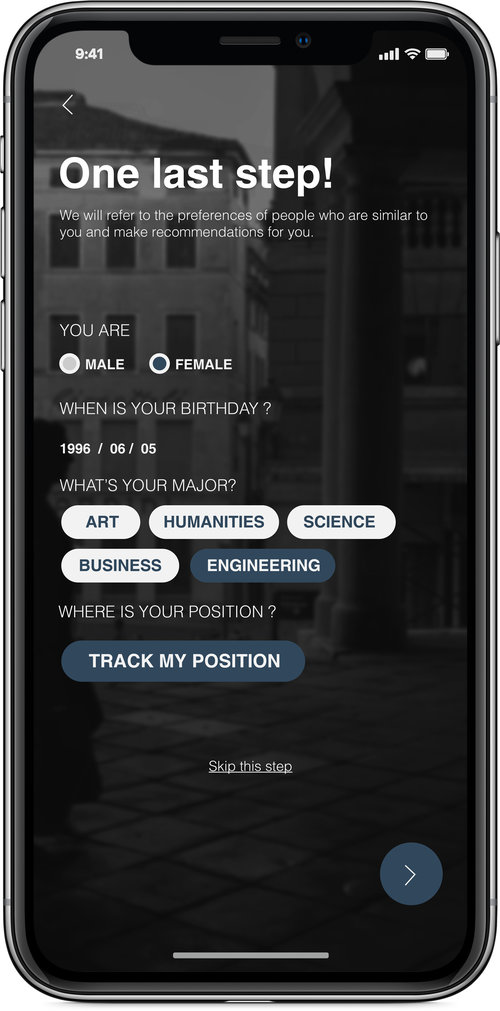
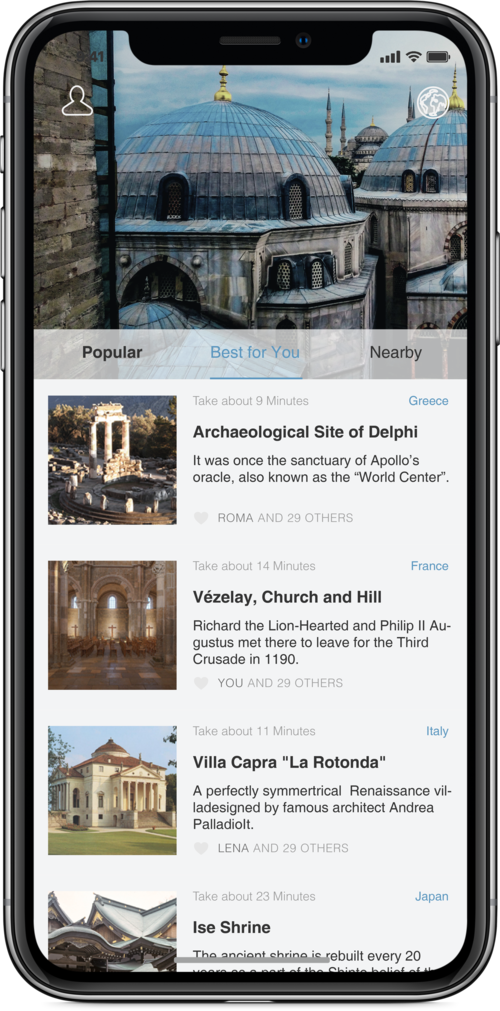
World Exploration
- Users can discover nearby heritage or embark on global explorations
- Random discoveries often unearth hidden treasures
- Visually representing heritage distribution to motivate users
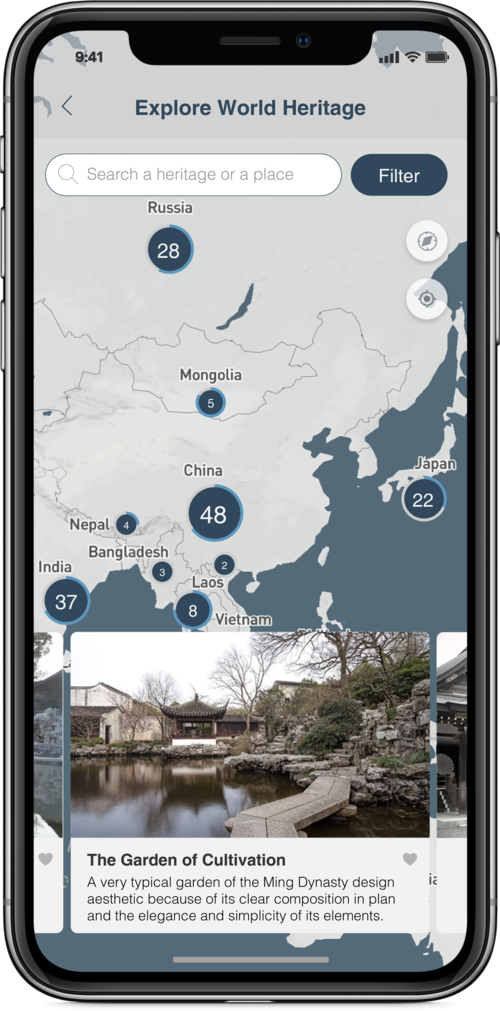
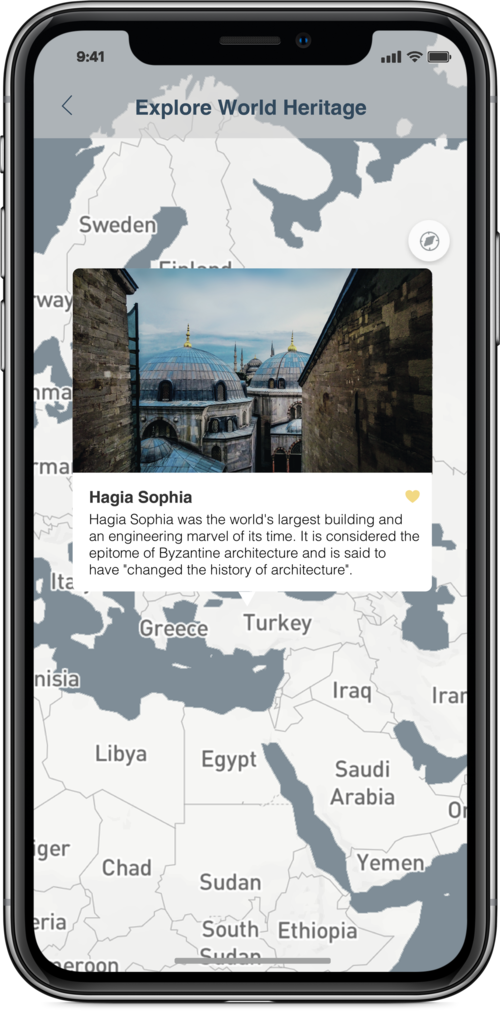
Heritage Introduction
- Panoramic exploration provides users with treasure-hunt experiences. It integrates the knowledge into the architecture itself, presenting it in a vivid way.
- Control the depth of the content: Point out what should not be missed. Recommend further learning materials and similar sites.
- Users are free to share what they learn at any moment.
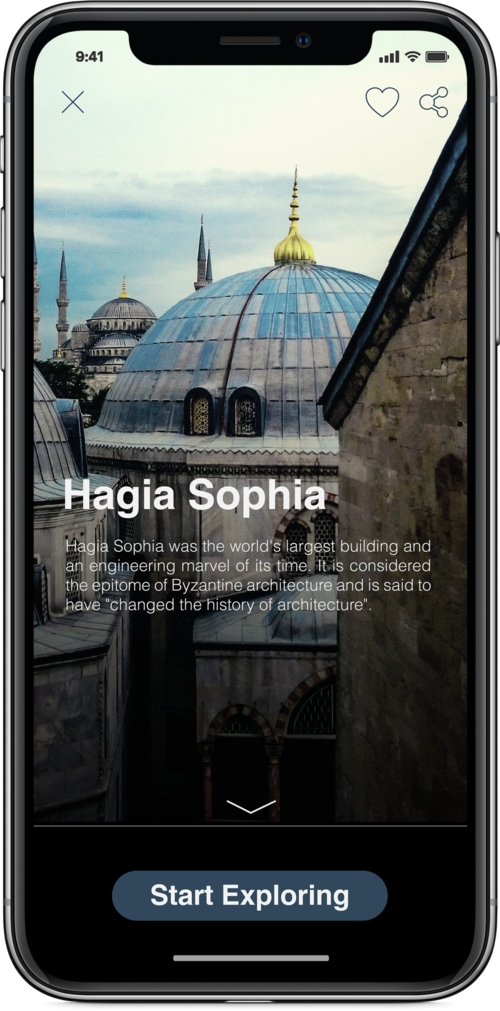

AR Camera
On-site, users can capture images with embedded architectural insights.
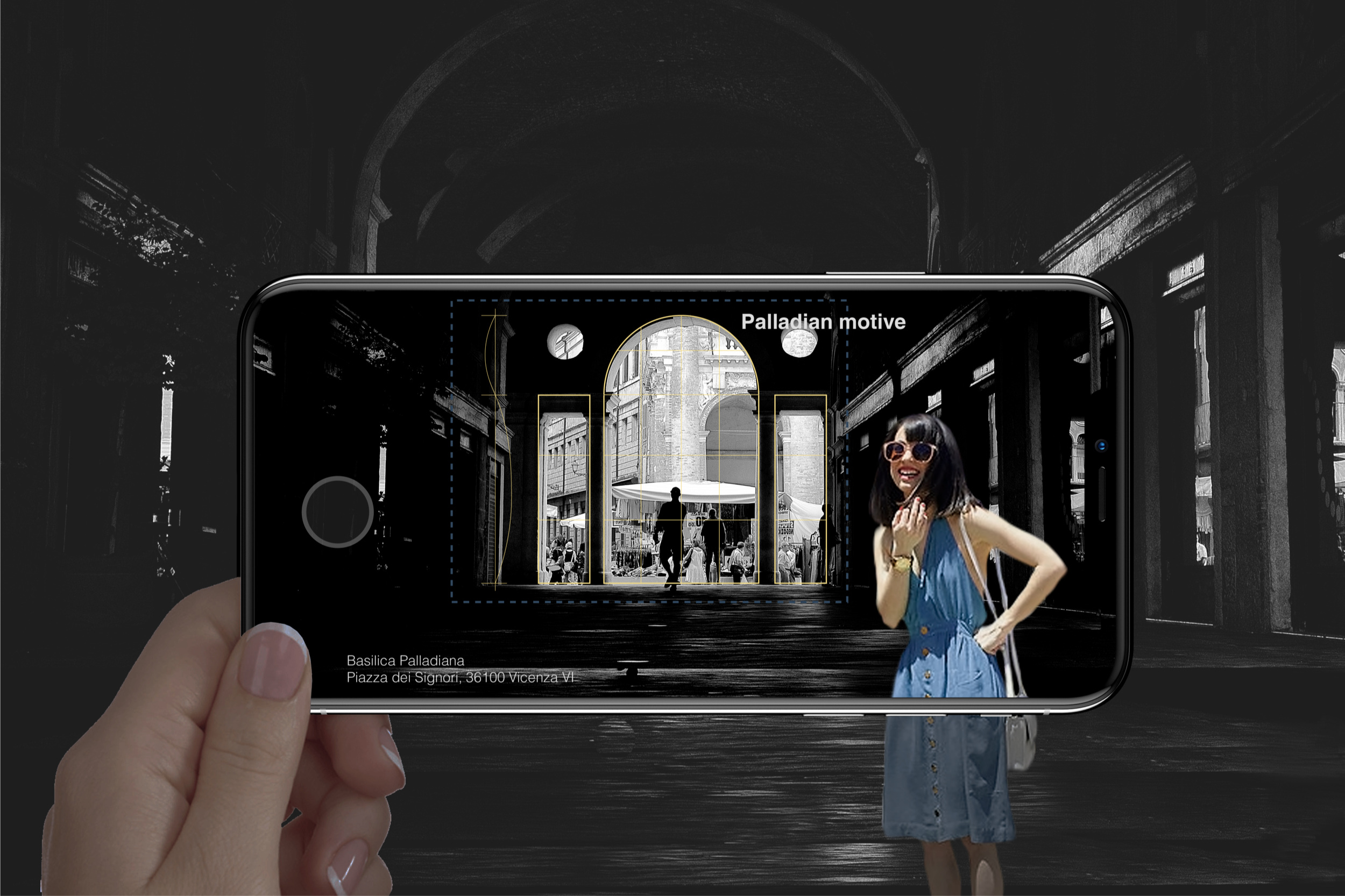
Reflection
Having majored in historical architecture preservation, I felt compelled to tackle a subject I deeply resonate with. This journey gave me fresh insights into UX design. Two core takeaways from this project include:
- Reframing the question is paramount. It’s crucial to invest time refining the problem rather than hastily jumping to solutions.
- Genuine user involvement is the best way to validate assumptions. Without user testing, I might’ve overlooked the real issue: not merely encouraging site visits but facilitating architectural heritage understanding.